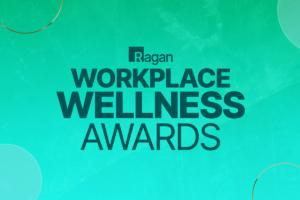Exploring employee perspectives and strategies for financial wellness support
A look at what’s top-of-mind for employees around financial wellness.

According to a recent CNBC Financial Confidence Survey, financial wellbeing is a stressor for 70% of Americans and was already on the rise even before the pandemic. In May, the Federal Reserve released its latest Economic Well-Being of U.S. Households report that found 73% of adults were doing okay at a minimum financially in 2022, down 5% from 2021. Meanwhile, the number of adults who indicated they were worse off financially rose 35%, the highest level since 2014 when the question was first asked.
The National Endowment for Financial Education (NEFE) posed a similar question, asking respondents to react to the statement “I am just getting by financially.” NEFE reported the results of 25% completely/very well; 29% somewhat and 45% not at all/very little.
What can organizations do to help
Based on those numbers, here are some things organizations can consider to support the financial wellbeing of its employees.
- Provide financial education, resources and tools: Offer workshops, seminars or online resources that provide employees with financial education on topics such as budgeting, debt management, saving and investing. Organizations can also offer resources or partnerships with financial institutions to provide employees with guidance on managing and reducing debt effectively and setting goals.
- Conduct financial wellness assessments: Periodic financial wellness assessments help organizations understand their employees’ financial needs and concerns and tailor support accordingly. After assessing the effectiveness of financial wellness programs, make necessary revisions based on employee feedback and evolving needs.
- Employee benefits communication: Ensure that employees are aware of the full range of benefits available to them, including healthcare plans, insurance coverage, employee discounts, and any other financial perks that help relieve some of the financial stress on them.
- Financial incentives and rewards: Consider implementing financial incentives tied to performance or wellness goals, such as bonuses or rewards for achieving financial milestones or participating in financial education programs. This will not only help in educating employees but will increase engagement with these benefits.
- Support for emergency situations: Establish programs or policies that can provide financial assistance or short-term loans to employees facing unexpected emergency expenses to relieve the pressure on them to find a solution to their crisis.
Supporting employee financial wellbeing is an ongoing process, and organizations should foster a culture that promotes financial literacy, support and stability for their employees. This will lift some of the burden off their shoulders and, in turn, create a more productive workforce.
Jon Minnick is the Special Projects Manager at Ragan and will be attending this year’s Employee Experience & Wellness Conference which will cover many aspects of the employee experience and areas of employee workplace wellbeing. Find out more about it here.







